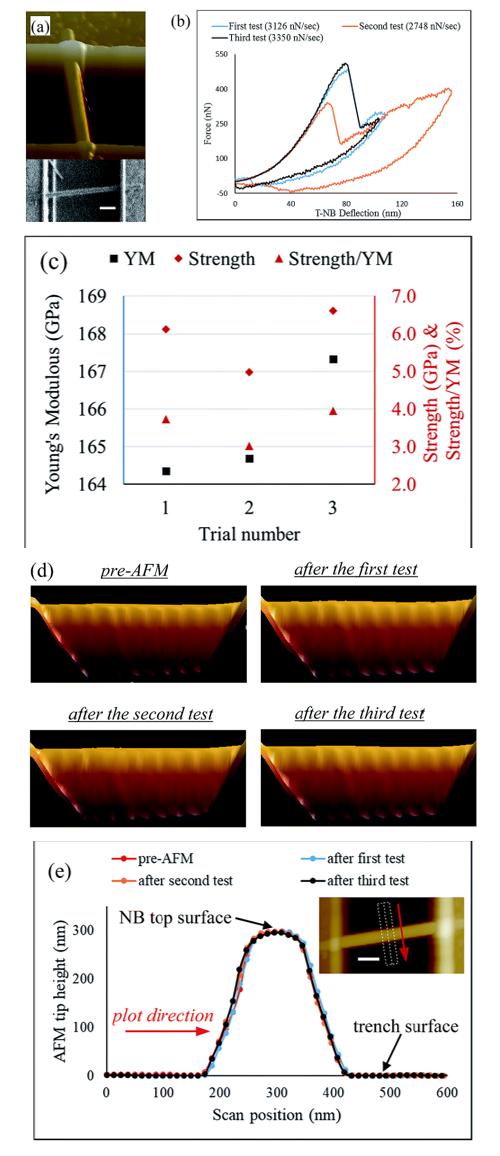Atomic force microscopy (AFM) based nanomechanics experiments involving polytypic todorokite-like manganese dioxide nanobelts reveal varied nanomechanical performance regimes such as brittle fracture, near-brittle fracture, and plastic recovery within the same material system. These nanobelts are synthesized through a layer-to-tunnel material transformation pathway and contain one-dimensional tunnels, which run along their longitudinal axis and are enveloped by m × 3 MnO6 octahedral units along their walls. Depending on the extent of material transformation towards a tunneled microstructure, the nanobelts exhibit stacking disorders or polytypism where the value for m ranges from 3 to up to ∼20 within different cross-sectional regions of the same nanobelt. The observation of multiple nanomechanical performance regimes within a single material system is attributed to a combination of two factors: (a) the extent of stacking disorder or polytypism within the nanobelts, and (b) the loading (or strain) rate of the AFM nanomechanics experiment. Controllable engineering of recoverable plasticity is a particularly beneficial attribute for advancing the mechanical stability of these ceramic materials, which hold promise for insertion in multiple next-generation technological applications that range from electrical energy storage solutions to catalysis.
Brittle Fracture to Recoverable Plasticity: Polytypism-dependent Nanomechanics in Todorokite-like Nanobelts
article Heading link

09.14.2018 Article Published
M. R. A. Shikder, M. Maksud, G. Vasudevamurthy, B. W. Byles, D. A. Cullen, K. L. More, E. Pomerantseva, and A. Subramanian. Nanoscale Advances DOI: 10.1039/c8na00079d (2019).
Abstract
Modified on November 11, 2018
